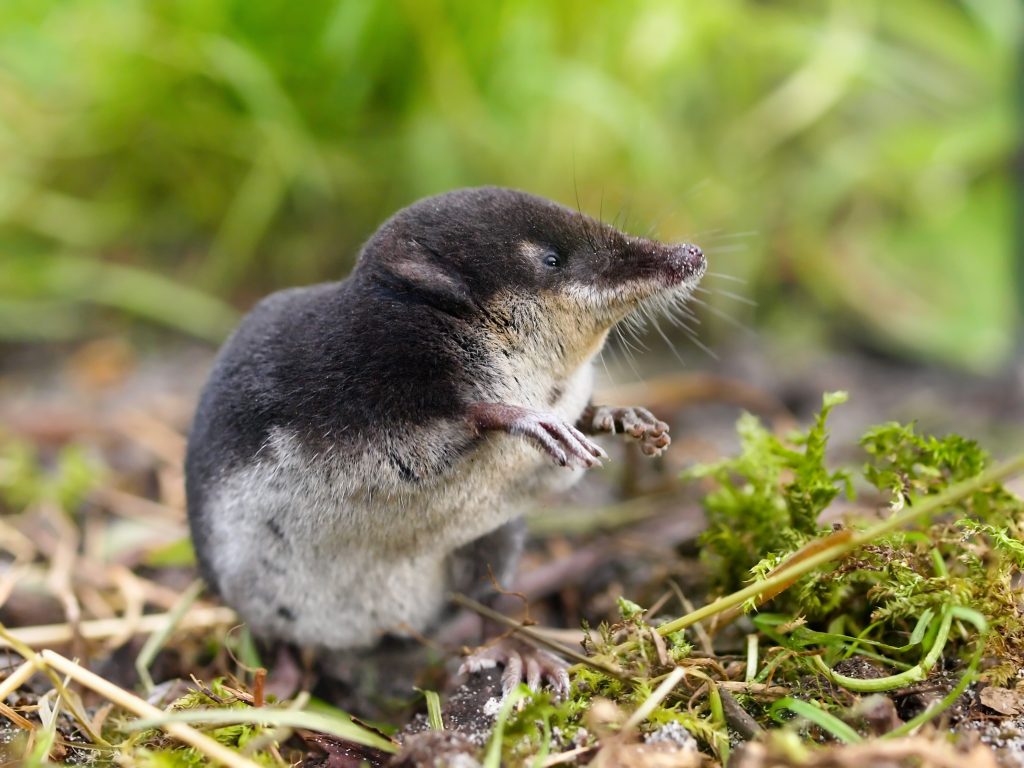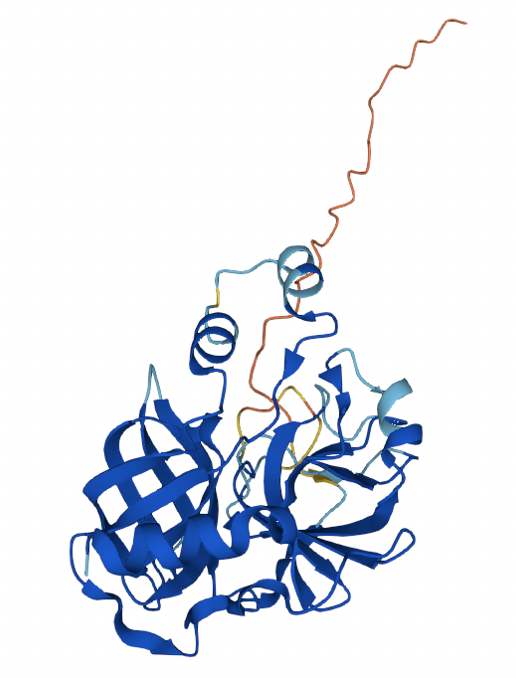Protein structures and AI
Artificial intelligence (AI) approaches use complex computing to predict the 3D structure of Blarina toxin, shown above. This information is stored in the Alpha Fold Database (with ID number AF-Q76B45-F1).
Many of us will be aware that snakes and spiders produce venoms, but did you know that certain mammals such as the water shrew are also venomous?

Venoms from snakes and insects are well researched. However, mammals rarely produce venom and studies on their venom are more limited. The Eurasian water shrew (Neomys fodiens) is one of a small number of venomous mammals. Its saliva contains toxins that allow it to subdue prey and as a result it can consume prey larger than itself.
The venom in water shrew saliva is a mixture of compounds and is thought to contain a toxin similar to one produced by the Northern short-tailed shrew (Blarina brevicauda).
Little is known about the structure of the Blarina toxin but scientific resources can help us make predictions. DNA provides the “instructions” for an organism to function and produce toxins. Analysis of the water shrew DNA sequence allows us to identify the region responsible for production of the Blarina toxin. This information is stored in databases such as UniProt (ID number Q76B45) which is managed at EMBL-EBI.

Artificial intelligence (AI) approaches use complex computing to predict the 3D structure of Blarina toxin, shown above. This information is stored in the Alpha Fold Database (with ID number AF-Q76B45-F1).